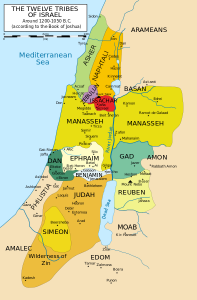If this is your first viewing, please see my Introduction before reading this.
14 September. 1 Chronicles chapter 6
This chapter focuses solely on the descendants of Levi, who were the temple priests and servants. Levi was great-grandfather to, among others, the three siblings Aaron, Moses and Miriam, whose exploits make up much of the book of Exodus.
Unlike the genealogies of other tribes, this chapter also lists the various towns and villages “and their pasture lands” which were to belong to the Levites. Why the pasture lands? Because the sacrificial system meant that large numbers of cattle and sheep were needed, and it would be the duty of those Levites who were not required for service in the Temple itself to do the necessary farming.
There is also a particular mention of those families who “ministered with song before the tabernacle of the tent of meeting, until Solomon had built the house of the Lord in Jerusalem; and they performed their service in due order” (6:32). Along with sacrifice, the Tabernacle/Temple required songs of praise to be sung. This twin emphasis on sacrifice and praise was to be at the heart of Jewish life for centuries.
The sacrifices have gone, but the praise continues, and the two are conflated; Hebrews 13:15 refers to Christians “offering a sacrifice of praise”. Taking time to worship God, and to let him develop in us spiritual gifts (words of prayer or prophecy, musical talent, or indeed the visual arts) in doing so is a kind of sacrifice or our self-interest, but one that reaps great rewards.
